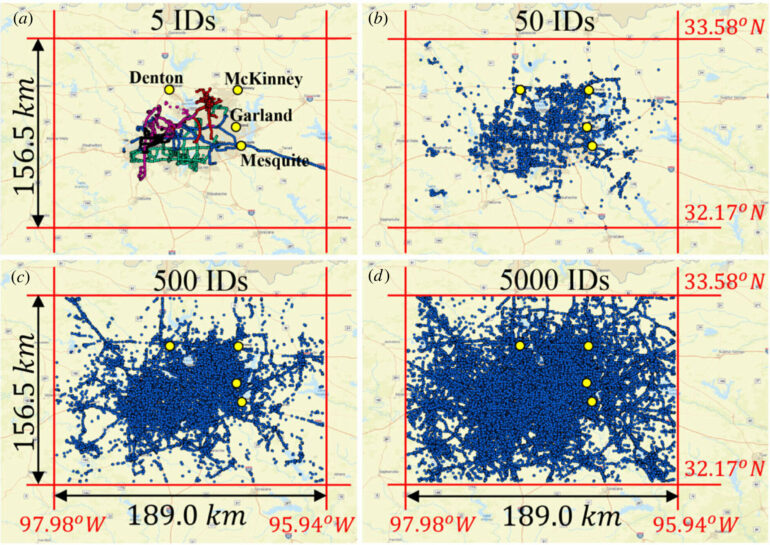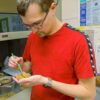From hurricanes in Houston to winter storms in Dallas, natural disasters can wreak havoc on a city. In any of these situations, policy makers, governing bodies, and aid programs need to know how to measure resilience—the length of time it will take a city to bounce back.
An SMU research team led by engineering professor Nicos Makris measured Dallas’s resilience by looking at anonymous cell phone data among residents in the Dallas metroplex before, during, and after the February 2021 North American winter storm. Their conclusion: Dallas recovered almost immediately after the winter storm ended, indicating Dallas exhibits a great degree of resilience.
“Despite millions of people losing power and water, forcing many to leave their homes immediately after the end of the storm, the city of Dallas reverted back to its pre-event response, showing that the city of Dallas has a great deal of resilience,” Makris said. “Citizens are very resilient individuals. They found ways to revert back.”
Measuring a city’s resilience is important for planning responses to future events and revealing potential vulnerabilities. The applications for this research extend far beyond Dallas, as United Nations data reveal that more than half of the world’s population currently lives in cities—a number expected to grow to nearly 70 percent by 2050.
Cities serve as global economic and cultural centers, but cities also tend to be in coastal areas and along fault lines, making them prone to acts of nature. This is compounded by climate change, which can enhance the strength or frequency of some of these natural hazards.
The Dallas study was completed by Makris, Addy Family Centennial Professor in Civil Engineering in SMU’s Lyle School of Engineering, along with SMU’s Gholamreza Moghimi, Eric Godat, and Tue Vu. Moghimi is a postdoctoral research fellow at SMU, while Godat is the team lead for research and data science in SMU’s Office of Information Technology (OIT). Vu also works in SMU’s OIT as the AI & ML Research Scientist.
The Dallas results reinforce Makris’ studies of Houston cell phone data after the winter storm as well as data from Hurricanes Harvey (2017) and Irma (2017). Even after the major flooding due to Hurricane Harvey, Houston residents went back to their normal patterns almost immediately after the emergency was over.
The study, ‘Mechanical analogue for cities’, has been published in Royal Society Open Science.
Measuring Resilience
Prediction is a tricky game because people, on an individual level, are unpredictable. However, group patterns are predictable using large datasets and mathematical models. Makris and his research team used GPS data from 13,000 cell phone users in the Dallas metroplex during February and March 2021 to evaluate when movement patterns went back to what they were before the winter storm.
By assuming a mechanical model of the city, Makris’ team was able to use the kind of mathematics that is usually applied to large numbers of particles to measure resilience.
Most urban resilience is done in a qualitative way, which is helpful in looking back at what happened, but less helpful in making predictions. Makris wanted to find a quantitative way to measure urban resilience in hopes that it could help make predictions and point to vulnerabilities. “We thought that maybe we could borrow concepts from physics to look at mobility patterns in large urban centers using GPS location data from cell phones.”
In order to crunch the numbers for the location data of 13,000 cell phone users over the course of a month, Makris’s team partnered with SMU’s Eric Godat, a physicist who leads a dedicated team that assists researchers across campus in using the University’s high-performance computing cluster. The HPC cluster has the computing capacity to do ensemble averaging, a kind of machine-learning process that is used to discern signals from noise or, in Makris’ case, movement patterns from random events.
By averaging GPS data, Makris and his team outlined the movement patters of Dallas citizens during a typical week. They then compared normal movement patterns to those during and after the week of the winter storm to determine when Dallas started getting back to normal, or in mathematical terms, “back to its initial equilibrium state.”
But why do these patterns translate from one city to another and from one type of natural hazard to another? Makris points out that even though we are the authors of our own actions, our group behavior as citizens of a city shows a great deal of determinism. “Our collective future has a periodicity that is determined, and tomorrow is waiting patiently to become the next present, unless you have a natural hazard in which it is broken.”
Makris is planning to use his city-wide data to then conduct studies on the community-level to learn which communities are more or less resilient in the face of a natural disruption. This research will help city planners by providing a quantitative measure of where best to allocate resources to prepare for future natural hazards.
More information:
Nicos Makris et al, Mechanical analogue for cities, Royal Society Open Science (2023). DOI: 10.1098/rsos.220943
Provided by
Southern Methodist University
Citation:
Cell phone data from winter snowstorm shows Dallas is resilient (2023, May 23)



